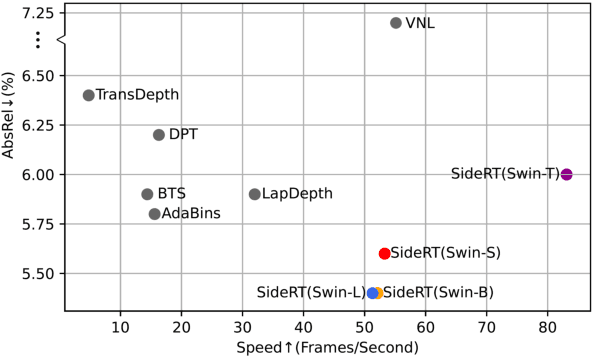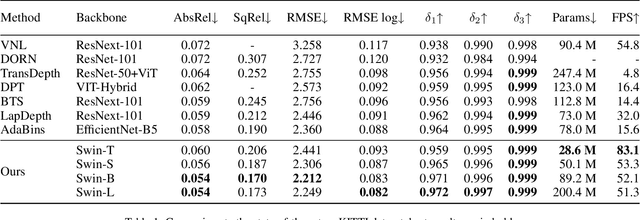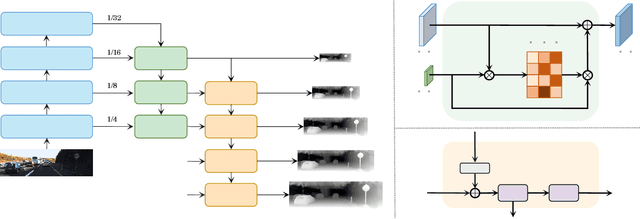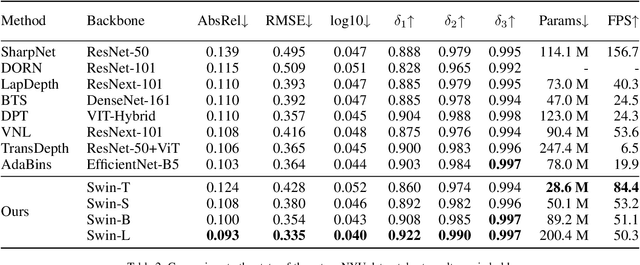Minghui Wang
Multi-Scale Deformable Transformers for Student Learning Behavior Detection in Smart Classroom
Oct 10, 2024Abstract:The integration of Artificial Intelligence into the modern educational system is rapidly evolving, particularly in monitoring student behavior in classrooms, a task traditionally dependent on manual observation. This conventional method is notably inefficient, prompting a shift toward more advanced solutions like computer vision. However, existing target detection models face significant challenges such as occlusion, blurring, and scale disparity, which are exacerbated by the dynamic and complex nature of classroom settings. Furthermore, these models must adeptly handle multiple target detection. To overcome these obstacles, we introduce the Student Learning Behavior Detection with Multi-Scale Deformable Transformers (SCB-DETR), an innovative approach that utilizes large convolutional kernels for upstream feature extraction, and multi-scale feature fusion. This technique significantly improves the detection capabilities for multi-scale and occluded targets, offering a robust solution for analyzing student behavior. SCB-DETR establishes an end-to-end framework that simplifies the detection process and consistently outperforms other deep learning methods. Employing our custom Student Classroom Behavior (SCBehavior) Dataset, SCB-DETR achieves a mean Average Precision (mAP) of 0.626, which is a 1.5% improvement over the baseline model's mAP and a 6% increase in AP50. These results demonstrate SCB-DETR's superior performance in handling the uneven distribution of student behaviors and ensuring precise detection in dynamic classroom environments.
SideRT: A Real-time Pure Transformer Architecture for Single Image Depth Estimation
Apr 29, 2022



Abstract:Since context modeling is critical for estimating depth from a single image, researchers put tremendous effort into obtaining global context. Many global manipulations are designed for traditional CNN-based architectures to overcome the locality of convolutions. Attention mechanisms or transformers originally designed for capturing long-range dependencies might be a better choice, but usually complicates architectures and could lead to a decrease in inference speed. In this work, we propose a pure transformer architecture called SideRT that can attain excellent predictions in real-time. In order to capture better global context, Cross-Scale Attention (CSA) and Multi-Scale Refinement (MSR) modules are designed to work collaboratively to fuse features of different scales efficiently. CSA modules focus on fusing features of high semantic similarities, while MSR modules aim to fuse features at corresponding positions. These two modules contain a few learnable parameters without convolutions, based on which a lightweight yet effective model is built. This architecture achieves state-of-the-art performances in real-time (51.3 FPS) and becomes much faster with a reasonable performance drop on a smaller backbone Swin-T (83.1 FPS). Furthermore, its performance surpasses the previous state-of-the-art by a large margin, improving AbsRel metric 6.9% on KITTI and 9.7% on NYU. To the best of our knowledge, this is the first work to show that transformer-based networks can attain state-of-the-art performance in real-time in the single image depth estimation field. Code will be made available soon.
 Add to Chrome
Add to Chrome Add to Firefox
Add to Firefox Add to Edge
Add to Edge